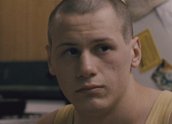


Snowtown (2010)
Synopsis
Snowtown is an account of the infamous Snowtown, or Bodies in the Barrels, murders, named after the discovery of eight bodies in an empty bank vault in the South Australian town of Snowtown in May 1999. Two more bodies were found in a backyard in Adelaide’s Salisbury North a few days later. Four men were convicted of committing or assisting in the murders: ringleader John Bunting, Robert Wagner, Mark Haydon and Jamie Vlassakis. The last-named became the Crown’s main witness.
The film begins with Vlassakis (Lucas Pittaway) and his half-brother living with their mother, Elizabeth (Louise Harris), in a poor Adelaide suburb. Vlassakis and his brother are victims of a neighbouring paedophile when Bunting appears on the scene. A warm, charismatic and friendly character, he seems to relish the chance to become a new father figure to Vlassakis.
But gradually a far darker side emerges, as Bunting relishes holding forth on what he would do to a paedophile if he caught one. Over time he manipulates the family and the motley group of friends who gather at their home into a frenzy of hate against sex offenders. Vlassakis begins to discover the horrible truth about what Bunting and his associates are up to and is taken into their confidence. Though disturbed by what he discovers, the teenager is scared for his own safety and reluctantly becomes an accomplice to Bunting’s murders.
Curator’s notes
Snowtown is a deeply disturbing film made with a skill and integrity that prevents it from being exploitative. It presents a remarkably persuasive and chilling account of horrible real-life events, allowing the viewer to understand how murders as unthinkable as this could have taken place in an Australian suburb. It invites sympathy not only for the murder and torture victims, but also the teenage Vassikilis, who had the misfortune to become de facto stepson to the psychopathic ringleader, John Bunting.
Director Justin Kurzel, making his feature debut, approaches the material naturalistically, using a largely non-professional cast drawn from the local community. Henshall, who gives a chillingly believable performance as Bunting, is the only professional actor.
Not all of the sprawling cast of friends and hangers-on surrounding Bunting are easily identifiable. Such narrative haziness fits with the script’s impressionistic approach in which the viewer, seeing things from the viewpoint of the vulnerable Vlassakis, has to gradually piece together what’s been going on behind the scenes. There is one prolonged, deeply upsetting scene of extreme violence and torture at around the mid-way point that many viewers have found very tough to stomach. Apart from this, Kurzel tends to steer clear of explicit depictions of violence, preferring to work via implication or metaphor – the latter in a scene where a potential victim shows off his pet snake eating a mouse.
From a screenwriting perspective, the script is interesting for the way that it uses a passive protagonist (Vlassakis) to approach a powerfully domineering antagonist (Bunting) – a useful technique used with great success in films as various as The Third Man (1950) and Animal Kingdom (2010).
Snowtown premiered at the Adelaide Film Festival (which had contributed production funding) to strong reviews and was released in Australian cinemas on 19 May 2011. Snowtown was released in the UK on 18 November 2011 and in the US, as The Snowtown Murders, on 2 March 2012.
At the first AACTA Awards, it won six prizes including Best Director (Kurzel); Actor (Henshall); Supporting Actress (Harris); Adapted Screenplay (Shaun Grant); Editing (Veronika Jenet) and Sound (Frank Lipson, Andrew McGrath, Des Kenneally, Michael Carden, John Simpson and Erin McKimm). It was also nominated for Best Picture (Anna McLeish and Sarah Shaw), Cinematography (Adam Arkapaw), Original Music Score (Jed Kurzel) and the AFI Members’ Choice Award.
- Overview
- Curator’s notes
- Video 3 clips
- Principal credits
- Find a copy
- Make a comment
- Map
- Add your review



